QSDA2022 Online Practice Questions and Answers
Refer to the exhibit.
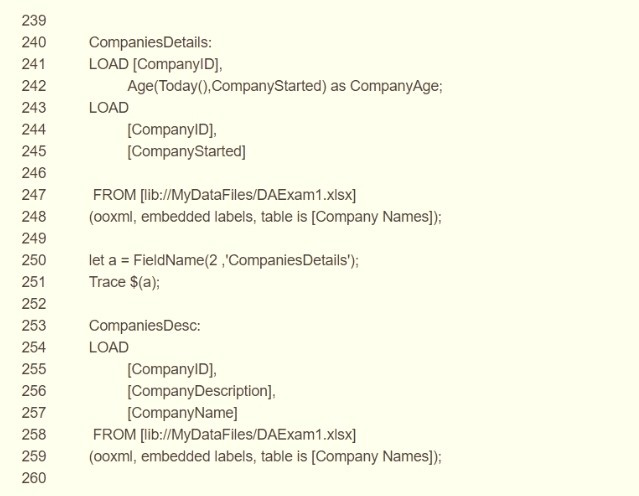
A business analyst reports that the 'CompanyAge' field does NOT display for users The data architect examines the LOAD script and wants to place the breakpoint in the script to check the field name.
Which line number should the data architect use?
A. 242 because field name appears in the output Panel of the debugger
B. 251 because the field name appears in the Variable panel of the debugger
C. 251 because the field name appears in the Qlik Log files
D. 251 because the field name appears in the Output panel of the debugger
Refer to the exhibit.
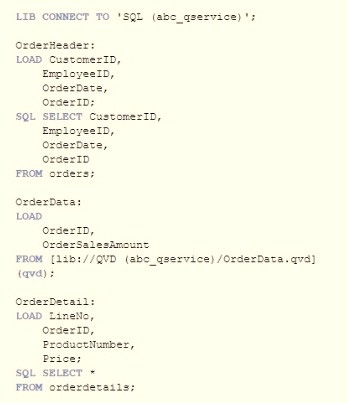
An existing app on Qlik Sense Enterprise is duplicated and transferred to a data architect to add some additional data When trying to manually reload the original script, the data architect receives an error What should be done to make sure the script runs correctly?
A. Add the line lib connect to 'QVD(abc_qservice/orderData.qvd) '; before the LOAD for the Order Data table
B. Add the line lib connect to ' SQL (abc_qs9rvi.es) ` ;before the LOAD for the Order Detail table
C. Give the data architect the Read rights on the data connections in the QMC
D. Make the data architect the owner of the app in the QMC
Refer to the exhibit.

USER1 has an app protected using this Section Access statement. Which countries can USER1 see in the app''
A. Germany. Italy, United Kingdom, The Netherlands
B. Italy, The Netherlands
C. Italy, United Kingdom, The Netherlands
D. Germany Italy, The Netherlands
Refer to the exhibit.
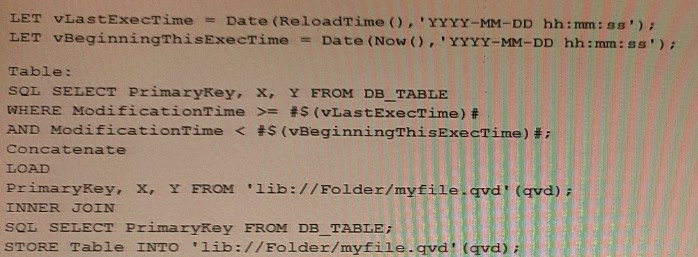
Which changes on the database will the script capture?
A. Insert and Remove rows
B. Insert. Update, and Remove rows
C. Insert and Update rows
D. Update and Remove rows
A company decides to migrate all apps from QlikView to Qlik Sense. After converting an apps: there are several unconverted objects. What should the data architect do?
A. Save the unconverted objects as extensions and import them into Qlik Sense
B. Remove the set analysis statements from the unconverted objects
C. Re-create the unconverted objects
D. Save the unconverted objects as master items
A data architect needs to develop a script to export tables from a model based upon rules from an independent file. The structure of the text file with the export rules is as follows:

These rules govern which table in the model to export, what the target root filename should be, and the number of copies to export.
The TableToExport values are already verified to exist in the model.
In addition, the format will always be QVD, and the copies will be incrementally numbered.
For example, the Customer table would be exported as:
What is the minimum set of scripting strategies the data architect must use?
A. Two loops without any conditional statement
B. One loop and two IF statements
C. Two loops and one IF statement
D. One loop and one SELECT CASE statement
A data architect needs to develop multiple apps for various departments. More departments are requesting apps over time The company uses specific requirements for the number interpretation variables (e.g., ThousandSep, DecimalSep) found at the beginning of a LOAD script.
The data architect wants to reduce duplicate scripts but does not want to copy and paste the number interpretation variables each time new app is created. The data architect prefers to use the least amount of script in Qlik Sense.
How should the data architect meet these requirements?
A. Save the script for the number interpretation variables in a text file and use the CALL function to insert the variables.
B. Create an Excel file with the number interpretation variables and use a FOR Next loop to load the variables into Qlik Sense
C. Save the script for the number interpretation variables in a text file and INLUDE function to insert the variables
D. Create an Excel file with the number interpretation variables and apply the variables to the app using a mapping table
A data architect executes the following script:
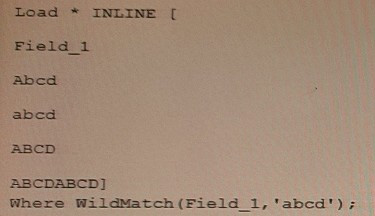
What will Field_1 contain after this script is executed?
A. Abed, abed, ABCD
B. abcd
C. Abcd, abcd
D. Abed, abed, ABCD, ABCDABCD
Refer to the exhibits.
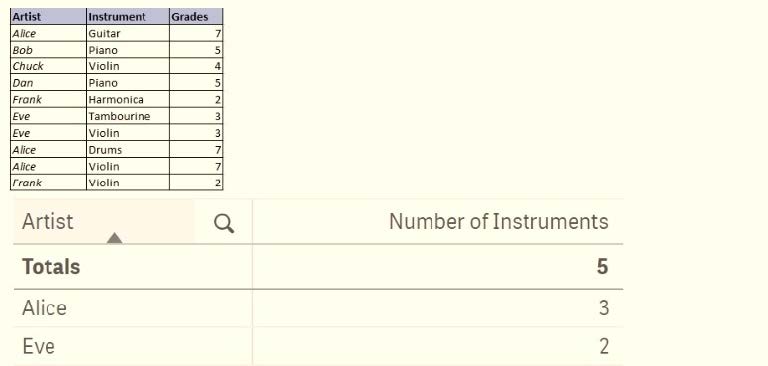
A music teacher needs to know which artists are eligible to enter this year's competition.
The teacher needs to find only the artists who have a music grade rank above two and play more than one instrument.
Which expression is needed for the Number of Instruments measure in the table?
A. Count({$
B. Count({S
C. Count({$
D. Count ({S
A customer has a dataset that contains latitude and longitude data for service points around the country. The data is retrieved using the following statement:

It must be clear to the end user that this is geographic data. Drag and drop, map-based visualization of this data is required. Which two steps should the data architect take to support this data? (Select two.)
A. Define Location as a master item, and set the tag to Sgeodata
B. Add GeoProject{' Point' , LatandLong) AS Point to the preceding load
C. Add GeoKakePoint (Lat, Long} as Point to Location's preceding load
D. Add the following to the end of the script: TAG FIELD LocationName With 'Sgeodata1, 'Srelated'; TAG FIELD Point With 'Sgeodata', 'Srelated1;
E. Add the following to the end of the script: TAG FIELD LocationName With 'Sgeoname', @relates_Pt'; TAG FIELD Point With 'Sgeopoint*f 'Srelates Location', '$hidden';